+ Open data
Open data
- Basic information
Basic information
| Entry | Database: PDB / ID: 5ne4 | ||||||||||||
|---|---|---|---|---|---|---|---|---|---|---|---|---|---|
| Title | Crystal Structure of Foot and Mouth Disease Virus O PanAsia | ||||||||||||
 Components Components |
| ||||||||||||
 Keywords Keywords | VIRUS / Foot and Mouth Disease Virus / FMDV / OpanAsia | ||||||||||||
| Function / homology |  Function and homology information Function and homology informationsymbiont-mediated perturbation of host chromatin organization / ribonucleoside triphosphate phosphatase activity / T=pseudo3 icosahedral viral capsid / host cell cytoplasmic vesicle membrane / viral capsid / host cell / regulation of translation / channel activity / monoatomic ion transmembrane transport / clathrin-dependent endocytosis of virus by host cell ...symbiont-mediated perturbation of host chromatin organization / ribonucleoside triphosphate phosphatase activity / T=pseudo3 icosahedral viral capsid / host cell cytoplasmic vesicle membrane / viral capsid / host cell / regulation of translation / channel activity / monoatomic ion transmembrane transport / clathrin-dependent endocytosis of virus by host cell / host cell cytoplasm / RNA helicase activity / viral protein processing / host cell endoplasmic reticulum membrane / cysteine-type endopeptidase activity / viral RNA genome replication / RNA-directed RNA polymerase activity / DNA-templated transcription / symbiont entry into host cell / virion attachment to host cell / host cell nucleus / structural molecule activity / proteolysis / RNA binding / ATP binding / membrane Similarity search - Function | ||||||||||||
| Biological species |   Foot-and-mouth disease virus Foot-and-mouth disease virus Foot-and-mouth disease virus - type O Foot-and-mouth disease virus - type O | ||||||||||||
| Method |  X-RAY DIFFRACTION / X-RAY DIFFRACTION /  SYNCHROTRON / SYNCHROTRON /  MOLECULAR REPLACEMENT / Resolution: 2.3 Å MOLECULAR REPLACEMENT / Resolution: 2.3 Å | ||||||||||||
 Authors Authors | Kotecha, A. / StuarT, D. | ||||||||||||
| Funding support |  United Kingdom, 3items United Kingdom, 3items
| ||||||||||||
 Citation Citation |  Journal: Nat Commun / Year: 2017 Journal: Nat Commun / Year: 2017Title: Rules of engagement between αvβ6 integrin and foot-and-mouth disease virus. Authors: Abhay Kotecha / Quan Wang / Xianchi Dong / Serban L Ilca / Marina Ondiviela / Rao Zihe / Julian Seago / Bryan Charleston / Elizabeth E Fry / Nicola G A Abrescia / Timothy A Springer / Juha T ...Authors: Abhay Kotecha / Quan Wang / Xianchi Dong / Serban L Ilca / Marina Ondiviela / Rao Zihe / Julian Seago / Bryan Charleston / Elizabeth E Fry / Nicola G A Abrescia / Timothy A Springer / Juha T Huiskonen / David I Stuart /     Abstract: Foot-and-mouth disease virus (FMDV) mediates cell entry by attachment to an integrin receptor, generally αvβ6, via a conserved arginine-glycine-aspartic acid (RGD) motif in the exposed, antigenic, ...Foot-and-mouth disease virus (FMDV) mediates cell entry by attachment to an integrin receptor, generally αvβ6, via a conserved arginine-glycine-aspartic acid (RGD) motif in the exposed, antigenic, GH loop of capsid protein VP1. Infection can also occur in tissue culture adapted virus in the absence of integrin via acquired basic mutations interacting with heparin sulphate (HS); this virus is attenuated in natural infections. HS interaction has been visualized at a conserved site in two serotypes suggesting a propensity for sulfated-sugar binding. Here we determined the interaction between αvβ6 and two tissue culture adapted FMDV strains by cryo-electron microscopy. In the preferred mode of engagement, the fully open form of the integrin, hitherto unseen at high resolution, attaches to an extended GH loop via interactions with the RGD motif plus downstream hydrophobic residues. In addition, an N-linked sugar of the integrin attaches to the previously identified HS binding site, suggesting a functional role. | ||||||||||||
| History |
|
- Structure visualization
Structure visualization
| Structure viewer | Molecule:  Molmil Molmil Jmol/JSmol Jmol/JSmol |
|---|
- Downloads & links
Downloads & links
- Download
Download
| PDBx/mmCIF format |  5ne4.cif.gz 5ne4.cif.gz | 143.3 KB | Display |  PDBx/mmCIF format PDBx/mmCIF format |
|---|---|---|---|---|
| PDB format |  pdb5ne4.ent.gz pdb5ne4.ent.gz | 111.1 KB | Display |  PDB format PDB format |
| PDBx/mmJSON format |  5ne4.json.gz 5ne4.json.gz | Tree view |  PDBx/mmJSON format PDBx/mmJSON format | |
| Others |  Other downloads Other downloads |
-Validation report
| Summary document |  5ne4_validation.pdf.gz 5ne4_validation.pdf.gz | 425.7 KB | Display |  wwPDB validaton report wwPDB validaton report |
|---|---|---|---|---|
| Full document |  5ne4_full_validation.pdf.gz 5ne4_full_validation.pdf.gz | 434.6 KB | Display | |
| Data in XML |  5ne4_validation.xml.gz 5ne4_validation.xml.gz | 15.3 KB | Display | |
| Data in CIF |  5ne4_validation.cif.gz 5ne4_validation.cif.gz | 23.1 KB | Display | |
| Arichive directory |  https://data.pdbj.org/pub/pdb/validation_reports/ne/5ne4 https://data.pdbj.org/pub/pdb/validation_reports/ne/5ne4 ftp://data.pdbj.org/pub/pdb/validation_reports/ne/5ne4 ftp://data.pdbj.org/pub/pdb/validation_reports/ne/5ne4 | HTTPS FTP |
-Related structure data
| Related structure data |  3630C  3631C  3632C  3633C  3634C  3635C  5nedC  5nejC  5nemC  5nerC 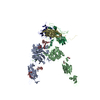 5netC  5neuC  1bbtS S: Starting model for refinement C: citing same article ( |
|---|---|
| Similar structure data |
- Links
Links
- Assembly
Assembly
| Deposited unit | 
| ||||||||
|---|---|---|---|---|---|---|---|---|---|
| 1 | x 60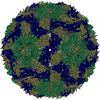
| ||||||||
| 2 |
| ||||||||
| 3 | x 5
| ||||||||
| 4 | x 6
| ||||||||
| 5 | 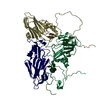
| ||||||||
| Unit cell |
| ||||||||
| Symmetry | Point symmetry: (Schoenflies symbol: I (icosahedral)) |
- Components
Components
| #1: Protein | Mass: 23341.467 Da / Num. of mol.: 1 Source method: isolated from a genetically manipulated source Source: (gene. exp.)   Foot-and-mouth disease virus / Strain: O / Variant: PanAsia / Cell line (production host): BHK-21 / Production host: Foot-and-mouth disease virus / Strain: O / Variant: PanAsia / Cell line (production host): BHK-21 / Production host:  Cricetinae (hamsters) / References: UniProt: A0A1B0SZV3, UniProt: Q98W00*PLUS Cricetinae (hamsters) / References: UniProt: A0A1B0SZV3, UniProt: Q98W00*PLUS |
|---|---|
| #2: Protein | Mass: 24389.453 Da / Num. of mol.: 1 Source method: isolated from a genetically manipulated source Source: (gene. exp.)   Foot-and-mouth disease virus / Strain: O / Variant: PanAsia / Cell line (production host): BHK-21 / Production host: Foot-and-mouth disease virus / Strain: O / Variant: PanAsia / Cell line (production host): BHK-21 / Production host:  Cricetinae (hamsters) / References: UniProt: A0A1B0QWS1, UniProt: Q6ZZ87*PLUS Cricetinae (hamsters) / References: UniProt: A0A1B0QWS1, UniProt: Q6ZZ87*PLUS |
| #3: Protein | Mass: 23938.898 Da / Num. of mol.: 1 / Mutation: H56R Source method: isolated from a genetically manipulated source Source: (gene. exp.)  Foot-and-mouth disease virus - type O / Variant: PanAsia / Cell line (production host): BHK-21 / Production host: Foot-and-mouth disease virus - type O / Variant: PanAsia / Cell line (production host): BHK-21 / Production host:  Cricetinae (hamsters) / References: UniProt: J3T9N5, UniProt: Q7TD07*PLUS Cricetinae (hamsters) / References: UniProt: J3T9N5, UniProt: Q7TD07*PLUS |
| #4: Protein | Mass: 8792.113 Da / Num. of mol.: 1 Source method: isolated from a genetically manipulated source Source: (gene. exp.)   Foot-and-mouth disease virus / Variant: PanAsia / Cell line (production host): BHK-21 / Production host: Foot-and-mouth disease virus / Variant: PanAsia / Cell line (production host): BHK-21 / Production host:  Cricetinae (hamsters) / References: UniProt: E6Y5R5, UniProt: Q7TD07*PLUS Cricetinae (hamsters) / References: UniProt: E6Y5R5, UniProt: Q7TD07*PLUS |
| #5: Water | ChemComp-HOH / |
-Experimental details
-Experiment
| Experiment | Method:  X-RAY DIFFRACTION / Number of used crystals: 1 X-RAY DIFFRACTION / Number of used crystals: 1 |
|---|
- Sample preparation
Sample preparation
| Crystal grow | Temperature: 294 K / Method: vapor diffusion, sitting drop / pH: 8 Details: 1.5 M ammonium sulfate, 100 mM bis-Tris propane, pH 7.0. PH range: 7.0-8.0 |
|---|
-Data collection
| Diffraction | Mean temperature: 294 K |
|---|---|
| Diffraction source | Source:  SYNCHROTRON / Site: SYNCHROTRON / Site:  Diamond Diamond  / Beamline: I24 / Wavelength: 0.9778 Å / Beamline: I24 / Wavelength: 0.9778 Å |
| Detector | Type: DECTRIS PILATUS3 6M / Detector: PIXEL / Date: Feb 13, 2014 |
| Radiation | Monochromator: Mirrors / Protocol: SINGLE WAVELENGTH / Monochromatic (M) / Laue (L): M / Scattering type: x-ray |
| Radiation wavelength | Wavelength: 0.9778 Å / Relative weight: 1 |
| Reflection | Resolution: 2.3→50 Å / Num. obs: 229892 / % possible obs: 76.9 % / Observed criterion σ(I): 0.86 / Redundancy: 2.1 % / Biso Wilson estimate: 23.8 Å2 / Rmerge(I) obs: 0.27 / Net I/σ(I): 3.1 |
| Reflection shell | Resolution: 2.3→2.38 Å / Redundancy: 1.7 % / Rmerge(I) obs: 0.88 / % possible all: 45.9 |
- Processing
Processing
| Software |
| ||||||||||||||||||||
|---|---|---|---|---|---|---|---|---|---|---|---|---|---|---|---|---|---|---|---|---|---|
| Refinement | Method to determine structure:  MOLECULAR REPLACEMENT MOLECULAR REPLACEMENTStarting model: 1BBT Resolution: 2.3→50 Å / Cross valid method: FREE R-VALUE
| ||||||||||||||||||||
| Solvent computation | Shrinkage radii: 1 Å / VDW probe radii: 1 Å / Bsol: 24.4454 Å2 / ksol: 0.35 e/Å3 | ||||||||||||||||||||
| Displacement parameters | Biso mean: 20.75 Å2 | ||||||||||||||||||||
| Refinement step | Cycle: LAST / Resolution: 2.3→50 Å
|
 Movie
Movie Controller
Controller



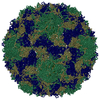

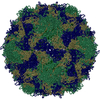
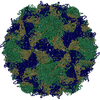
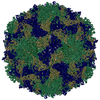
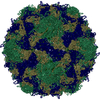
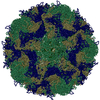


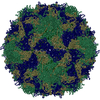
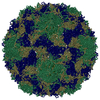
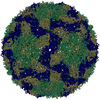
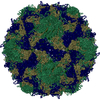

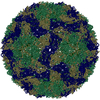





 PDBj
PDBj


